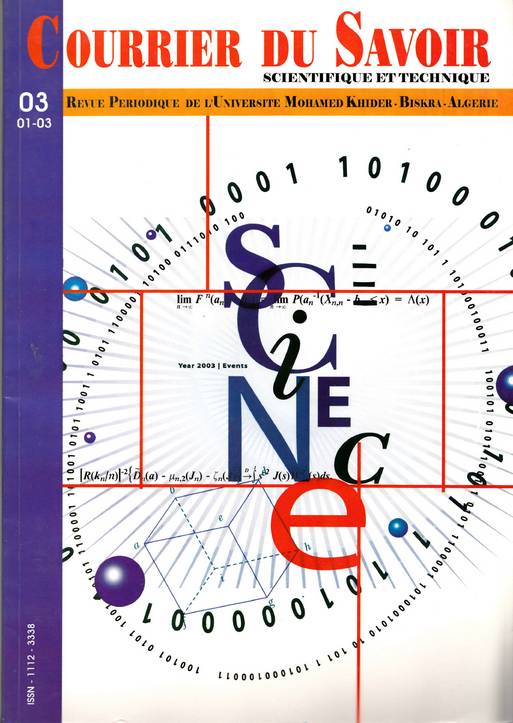ON THE STATIC AND DYNAMIC SCATTERING FROM LINEAR AND BRANCHED POLYELECTROLYTES AT VARIOUS SCREENING LENGTHS PROPRIETES DE DIFFUSION STATIQUE ET DYNAMIQUE DE POLYELECTROLYTES LINEAIRES ET RAMIFIES A DIVERSES LONGUEURS D’ECRAN
Résumé
During the two last decades, branched polyelectrolytes have been thoroughly studied from theoretical and experimental
standpoints. In this report, we attempt to compare the behaviour of highly branched polyelectrolytes to that of their linear
counterparts at low ionic strength. As expected, the expansion behaviour of the branched materials is considerably less than of
that of the corresponding linear chains. Surprisingly, in the former case (sphere-like behavior), the ratio of the radius of
gyration to the hydrodynamic radius ρ=Rg/Rh shows an opposite behaviour as compared to the second one (rod-like behavior);
indeed, contrary to the case of linear chains for which this ratio increases, that of branched homologous decreases as the ionic
strength is lowered. Analyzis of the data, depicted in Kratky plots, reveals substantial discrepancies between the both
polymeric structures. Moreover, at high ionic strength, one observes a rod-like structure that undergoes a transition to a
disordered conformation which is not however that of a random coil, whereas, at low one, it appears that the two double- helix
unfold and the loop strongly expands.
Ces deux dernières décennies, les polyélectrolytes ramifiés ont été activement étudiés sur le double plan théorique et
expérimental; le propos de cette étude est de tenter de comparer le comportement de polyélectrolytes fortement ramifiés à celui
de leurs homologues linéaires pour des forces ioniques faibles. Comme attendu, l'expansion des matériaux ramifiés est
considérablement moindre que celle des chaînes linéaires correspondantes. Cependant, il est surprenant que, dans le premier
cas (comportement d’une sphère), le rapport du rayon de giration au rayon hydrodynamique ρ =Rg/Rh montre un
comportement opposé à celui correspondant au second cas (comportement de bâtonnet); en effet, contrairement au cas des
chaînes linéaires pour lesquelles ce rapport croît, celui de leurs homologues ramifiés diminue à mesure que la concentration
ionique est abaissée. L’analyse des données, mises en évidence dans la représentation de Kratky, indique des écarts
substantiels entre les deux structures polymériques. Par ailleurs, pour une force ionique élevée, on observe une structure en
forme de bâtonnet qui subit une transition vers une conformation désordonnée qui n'est cependant pas celle d’une pelote
statistique, tandis que, pour des forces ioniques basses, il apparaît que les deux double-hélices ne se replient pas et la boucle
s’étend fortement.
Références
1949, 17, 1301.
[2] Yamakawa, H. Modern Theory of Polymer Solutions;
Harper and Row: New York, 1971.
[3] Douglas, J. F.; Roovers, J.; Freed, K. F.
L. Bouzina and al.
74
Macromolecules 1990, 23, 4168.
[4] Smisek, D. L.; Hoagland, D. A. Science 1990, 248,
1221.
[5] Burchard, W.; Markus, F.; Eduard, M. Ber.
Bunsenges. Phys. Chem. 1996, 100, 807-814.
[6] Wu, H.-C. H.; Sarko, A. Carbohydrate Res. 1978, 61,
7, 27.
[7] French, D. in: Starch, Chemistry and Technology,
Chapt. 7, P. 183, ed. by R.L. Whisler, Bemiller, J. and
E. F. Paschall, Academic press, New York 1984.
[8] Burchard, W. Adv. Polym. Sci 1983, 48, 1; Burchard,
W. Macromolecules 1974, 7, 841; 1977, 10, 919.
[9] Imberty, A. Perez, S. Biopolymers 1988, 27, 1205.


